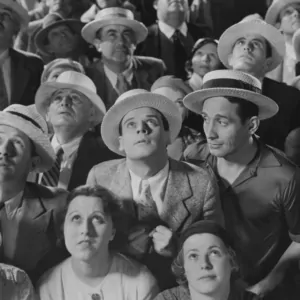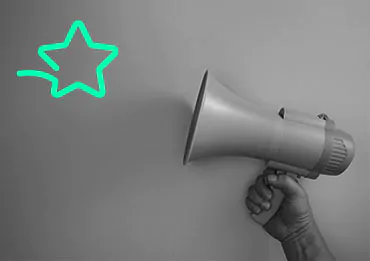Is the attention span of users really that short?
In this day and age, the attention span of consumers is shorter than ever before. This is noticeable in our own experience and environment, but it is also backed up from a scientific perspective.
A research team from the Max Planck Institute for Human Development, the Technical University of Berlin, the Technical University of Denkmark and the University College Cork conducted a study on this topic. According to the study, the average attention span has dropped from 12 to just eight seconds since 2000.
The fact that people only pay attention to content for such a short time means that they also forget the content quickly. This is referred to as social acceleration. Current topics are being forgotten more and more quickly. What is still being hotly discussed on Twitter and Reddit today is no longer of interest tomorrow. Often, the next exciting topic replaces the old one. The trending Twitter hashtags are a good example of how short-lived content is.
Why are the first seconds crucial? The reasons behind the short attention span
To put it quite banally, the first few seconds decide whether a user stays on a website or bounces right back, whether a user watches a video to the end or not, whether a user reads the advertising banner or not. If you succeed in captivating people in the first few seconds, the likelihood that they will consume the entire message and possibly move on to a conversion, such as a purchase or registration, increases. The first few seconds are therefore crucial in getting users to linger, engage, and ultimately take the desired action.
1. Information overload
One of the reasons for the short attention span is information overload. In a world where users are constantly confronted with an abundance of information – be it through emails, social media, advertising or news. According to SignHouse, around 16,000 TikTok videos are uploaded every minute. In addition, there are other information platforms and social media channels. So it’s clear that people are becoming more selective and skimming content to cope with the information overload and filter out the information that is relevant to them.
2. Multitasking
Another influencing factor is multitasking. In modern society, people often juggle multiple tasks simultaneously. People switch back and forth between different devices, platforms, locations, tasks, and demands. This fragments their attention and makes it harder to focus on a particular piece of content for an extended period of time. When scrolling, usually only a fraction of our attention is focused on the displayed content.
3. Digital distractions and FOMO
In today’s digital world, distractions are ubiquitous and pose a major challenge to our attention. Notifications, pop-ups, and the constant presence of social media tempt us to become quickly distracted. Our devices are always at our fingertips, and content is available to us 24/7. Day and night, countless people around the world post and comment online. Making the digital world a seemingly endless canvas of new possibilities. This makes the Fear of Missing Out (FOMO) all the greater. The fear of missing out makes it difficult for us to resist the distractions and focus our attention on other things.
4. Fast-moving culture
Last but not least, fast-paced culture is a factor that has shortened attention spans. Everything has to go fast, be consumable quickly, and deliver instant results. This expectation of instant gratification also affects the attention span in marketing. Consumers have less patience and expect information and content to speak to us immediately.
As a marketing agency and business, it is critical to understand these changes and adjust marketing strategies accordingly. You need to adapt to the short attention span of your target audiences and create content that engages immediately and leaves a lasting impression. In the next section, we look at specific approaches and best practices for how companies can meet this demand and effectively deliver their marketing messages despite the fast-paced nature of the culture.
What does a short Attention Span mean for concentration?
The human brain is known to adapt to its environment. However, an average attention span of 8 seconds doesn’t necessarily mean that people can’t focus on something for longer. Instead, the brain filters and decides more quickly which information and content is personally relevant and which is not. This ability to selectively perceive is particularly pronounced in Gen Z, as is the ability to multitask.

Get more attention with the right content: 10 tips for online marketing
1. Know your target group
Marketers should know their target audience well and adapt their marketing strategies accordingly. They should take into account their needs, interests and preferences to create content that is tailored to them.
2. Focus on quality
What is needed here is high-quality content that adds value to users. Content should be informative, relevant and engaging.
3.Use visual stimuli and design content clearly.
High-quality images, graphics and videos in marketing campaigns serve as eye-catchers. Likewise, content should be visually appealing. It is advisable to divide text content into short paragraphs and use concise headlines. Bullet points and bold print are also useful to ensure a clear and easy-to-read presentation. Short sentences can be used to improve readability.
4. Use short messages and triggers
Messages work best when they are concise and to the point. Triggers such as negative wording in headlines like “This is what you’re doing wrong with your diet” and “This is why you’re not getting followers” achieve more attention and higher click-through rates. Other triggers can be asking the target group questions and addressing them by name in e-mail marketing if possible.
5. Focus on storytelling
Stories that stir emotions and connect with the target audience are more effective than infodumping and plausible advertising. Exciting and captivating narratives increase the interest of users.
6. Make use of live videos and short videos.
Live streams can be used to engage the target audience directly. Here, questions can be answered, exciting content can be shared, and an interactive experience can be created for viewers. Marketers should definitely take advantage of the popularity of short videos in the form of reels, TikToks or YouTube shorts. These short videos are trending, pushed by the algorithm, and have high virality.
7. Use gamification elements
An effective online marketing strategy is to integrate gamified elements into marketing campaigns. For example, brands can use a quiz, sweepstakes or reward systems to encourage engagement.
Conclusion:
Users’ short attention spans pose a challenge for online marketing. In an era of information overload, multitasking, and digital distractions, it is critical to make a lasting impression in the first few seconds. The importance of those first seconds is undeniable, as they determine whether the target audience remains interested or quickly forgets the content.
By conveying clear and appealing messages, using visual stimuli and telling engaging stories, they increase the chances of attracting and retaining the target audience’s attention. The trick is to realize how limited the time is that brands and creators have to capture consumers’ attention. By adapting to changing consumer habits and persuading in the first few seconds, they can effectively work with the shortening attention span and make their marketing strategies successful.
When it comes to designing an effective and up-to-date online marketing strategy, an online marketing agency like ONELINE is happy to help.



